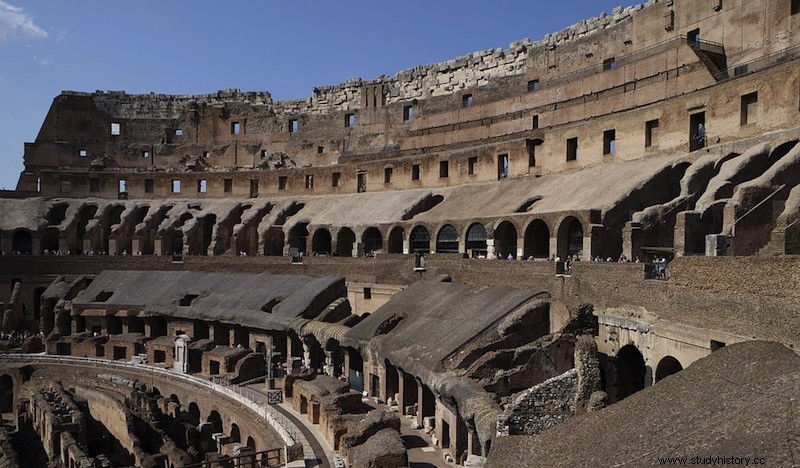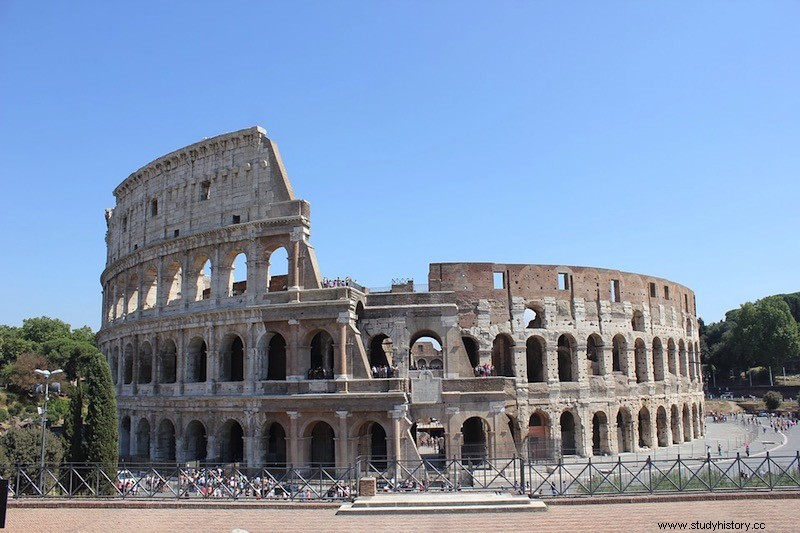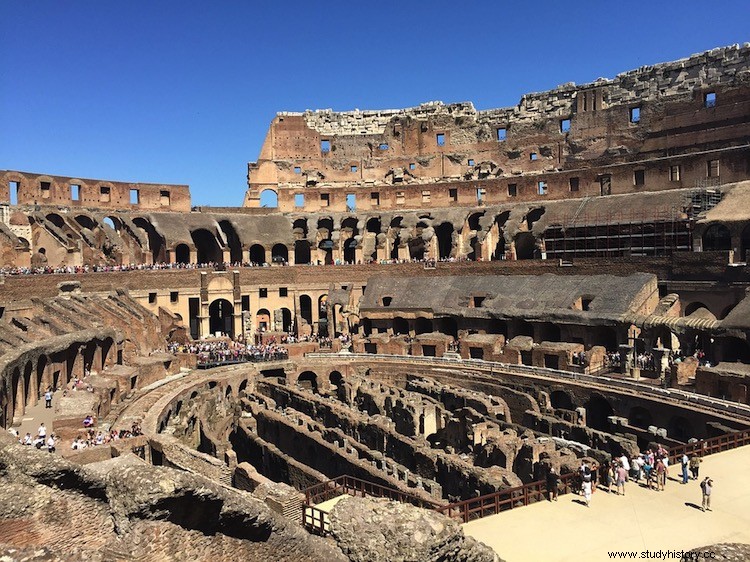An ancient Roman proverb said:as long as the Colosseum lasts, Rome will last; if the Colosseum falls, so will Rome and, with it, the world . Although it is somewhat pretentious, among other things because the old capital of the Empire (and the Empire itself) already existed hundreds of years before the building was built, the truth is that the Colosseum It is still standing and tourists can continue to come to Rome to visit its wonders. And, incidentally, take a photo with one of the extras dressed as legionnaires or gladiators that are nearby; eye, they are paid.
The original name was Flavian Amphitheatre , well, the Colosseum it is a nickname that was probably given to him because of the colossal statue of Nero that stood next to him. And, as we said before, the Romans attended gladiator fights long before its construction, which was decided by Emperor Vespasian (of the Flavian dynasty, hence the name) in the year 72 AD. to replace the previous enclosure, already small and obsolete, on the occasion of the celebration of his victory over the Jewish rebellion.

In fact, he died before seeing it finished and it was his son Tito who completed the works eight years later. The inauguration took place with three months of parties that, according to calculations, they supposed the death of 2,000 gladiators and 9,000 animals; It is believed that this massacre was the last straw for the population of beasts that inhabited the countries of what is now North Africa.
The Colosseum, located in the homonymous square (Metro B:Colosseo), is a labyrinth of stairs, ramps, grandstands, podium (boxes) and vomitories designed to evict its fifty-five thousand spectators in just ten minutes and which are structured in four floors, externally decorated in a classical stylistic order of architecture:Doric, Ionic, Corinthian and Composite.

They formed eighty arches on the facade, each adorned with a statue. People were protected from the strong Mediterranean sun thanks to a huge velarium or awning; Since it was made of fabric, it is not preserved, but some of the 240 masts that expert sailors handled to extend or collect it, as if it were the sails of a ship.
As for the subsoil, it was where both the animals and the prisoners were housed, as well as the gladiators. If you look at what the arena used to be -actually elliptical- you can see the different dependencies and the platforms, moved by lathes, through which the cages were raised to the outside. In addition, the sand could be flooded to form a large pond in which naumaquias were held. , that is, water battles with small ships.
The amphitheater hosted fights until the 5th century, when Christianity prohibited them. Later it was used as a fortress and finally fell into disuse, the marble that covered it being depredated, as well as the decorative metal pieces and even the staples of the stones.

The cheapest ticket costs 16 euros, a price that includes the visit to the Palatine, although there are discounts for teachers and EU citizens between the ages of 18 and 24. Minors and those over 65 enter free.
Modern technologies have allowed very attractive and interesting innovations in guided tours, which can now be done with virtual reality using Oculus VR that will even allow us to contemplate a gladiatorial combat and decide its fate.
Families with children between 5 and 12 years old can opt for the family visit that includes the Forum and the Palatine, also led by a guide but with the added bonus of participating in an interactive game. Something that children, without a doubt, will never forget.
If you also want preferential access without waiting in line, we recommend you take a look at Musement, where you can explore all the options to visit the Colosseum.
